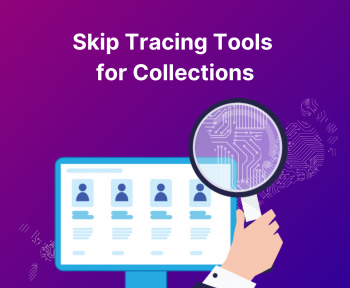Are your Loan Collection Mechanisms Future-Ready?
As the world tries to return to a semblance of normalcy in a post-pandemic world, the lending industry is seeing some respite. A recent Moody’s report¹ expects growth in bank loans to accelerate to 12-13% in FY 23 aided by increasing corporate earnings and easing of funding constraints for NBFCs. An Icra report² predicts an 8.9-10.2 per cent growth for bank credit in FY23.
Yet, the impact of the pandemic will continue to be felt when it comes to loan collections. The Reserve Bank of India’s (RBI’s) Financial Stability Report (FSR) from December 2021 points to headwinds in the retail credit growth model, rising delinquencies, and a dip in originations in new-to-credit segments. The report speculates that bad loans of commercial banks in India could rise to between 8.1 and 9.5 percent by September 2022.
Also, the RBI’s two-year moratorium period offered to businesses during the pandemic will end between March and September 2022. While most banks have voluntarily made provisions to deal with the slippage of restructured loans, higher than expected slippages could be a source of worry. A report by the India Ratings and Research predicted that the stressed asset ratio in the MSME segment could rise to 16.7% in FY23 from 11.7% by the end of FY21. In addition, geopolitical developments³ such as the Russia-Ukraine crisis could lead to greater inflation, causing stress for borrowers.
Challenges Remain in Loan Collections

Given the broader industry challenges pertaining to loan collections, it becomes more important than ever to ensure that the collections process itself is as efficient and effective as possible. Currently, the collections mechanism is overrun with issues such as zero visibility, huge administrative overheads, the need for extensive manual intervention, long recovery cycles, and low-resolution rates.
Elements of an Optimum Loan Collections Mechanism
Optimizing collections with the right technology that leverages technologies such as AI, automation, and analytics is important. At the same time, ensuring a favourable customer experience is also crucial.
Here are some ways to achieve this:
- Embracing Automation
Automation in banking industry is evolving with the penetration of digital and the need to drive efficiencies. Advanced technologies today enable us to automatically trigger communication sequences based on the actions of borrowers. One can create templates and automate emails, SMS, WhatsApp messages, and voice messages for different segments of your borrowers. For instance, Credgenics allows lenders to send and track legal notices automatically using technology and track all digital and physical notices in one single dashboard. The solution also allows lenders to leverage automation in their legal workflow, get easy access to the recovery specialists and manage all their cases efficiently.
2. Empowering the Team to Maximize Collections
Not all borrowers are the same. As the McKinsey report titled ‘Behavioral insights and innovative treatments in collections’ observes, behaviour-based segmentation of collections strategies can help significantly improve collections.
AI can help predict the chances of recovery and recommend the best strategies for every loan account. Credgenics’ AI engine, for example, can use past loan accounts data to calculate the recovery chances, costs, and expected time for every case.
AI can also help the collections team prioritize accounts that have a greater chance of getting recoveries and remind them to follow up on time and track every call. To improve efficiencies on the ground, Credgenics CG Collect mobile app, which comes with integrated in-app calling facility and Google maps integration, can assist field agents in navigating to the borrowers’ locations.
3. Get the visibility
When it comes to dealing with large borrower databases, access to the right data and insights is valuable. Having tools in place to identify the best-performing agents, understand gaps in the collections process, collection rates, total loan amounts recovered, and even analytics on the most effective communication channels can help make processes more effective. For instance, Credgenics loan collections software platform helps lenders view various borrower details, other loan accounts, missed EMIs and recovery history, collection status, etc. in one snapshot through visual reports.
Advanced technology combined with domain expertise can help dramatically simplify the loan collection process, making it efficient and more effective.
References:
- https://timesofindia.indiatimes.com/business/india-business/rising-rates-to-help-banks-says-moodys/articleshow/90786965.cms?utm_source=contentofinterest&utm_medium=text&utm_campaign=cppst
- https://www.financialexpress.com/industry/banking-finance/bank-credit-may-grow-8-9-10-2-in-fy23-icra/2482778/
- https://economictimes.indiatimes.com/industry/banking/finance/banking/banks-in-india-may-face-headwinds-from-russia-ukraine-crisis-sp/articleshow/90265065.cms
Author: Rishabh Goel- Co-Founder & CEO, Credgenics





